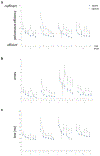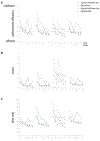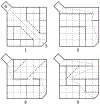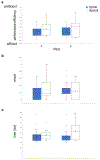Identifying Dyslexia: Link between Maze Learning and Dyslexia Susceptibility Gene, DCDC2, in Young Children
- PMID: 34186533
- PMCID: PMC8292181
- DOI: 10.1159/000516667
Identifying Dyslexia: Link between Maze Learning and Dyslexia Susceptibility Gene, DCDC2, in Young Children
Abstract
Dyslexia is a common learning disability that affects processing of written language despite adequate intelligence and educational background. If learning disabilities remain untreated, a child may experience long-term social and emotional problems, which influence future success in all aspects of their life. Dyslexia has a 60% heritability rate, and genetic studies have identified multiple dyslexia susceptibility genes (DSGs). DSGs, such as DCDC2, are consistently associated with the risk and severity of reading disability (RD). Altered neural connectivity within temporoparietal regions of the brain is associated with specific variants of DSGs in individuals with RD. Genetically altering DSG expression in mice results in visual and auditory processing deficits as well as neurophysiological and neuroanatomical disruptions. Previously, we demonstrated that learning deficits associated with RD can be translated across species using virtual environments. In this 2-year longitudinal study, we demonstrate that performance on a virtual Hebb-Williams maze in pre-readers is able to predict future reading impairment, and the genetic risk strengthens, but is not dependent on, this relationship. Due to the lack of oral reporting and use of letters, this easy-to-use tool may be particularly valuable in a remote working environment as well as working with vulnerable populations such as English language learners.
Keywords: Early identification; READ1; Reading disorder; Translational research; Virtual maze.
© 2021 S. Karger AG, Basel.
Conflict of interest statement
Conflict of Interest Statement
Dr. Lisa A. Gabel has a US patent pending (US patent Apl. No. 15/934,567) for the use of the virtual Hebb-Williams maze as a tool for the early identification of dyslexia.
Figures








References
-
- Gori S, Mascheretti S, Giora E, Ronconi L, Ruffino M, Quadrelli E, et al. The DCDC2 intron 2 deletion impairs illusory motion perception unveiling the selective role of magnocellular-dorsal stream in reading (dis)ability. Cereb Cortex. 2015. June;25(6):1685–95. - PubMed
Publication types
MeSH terms
Substances
Grants and funding
LinkOut - more resources
Full Text Sources
Miscellaneous

